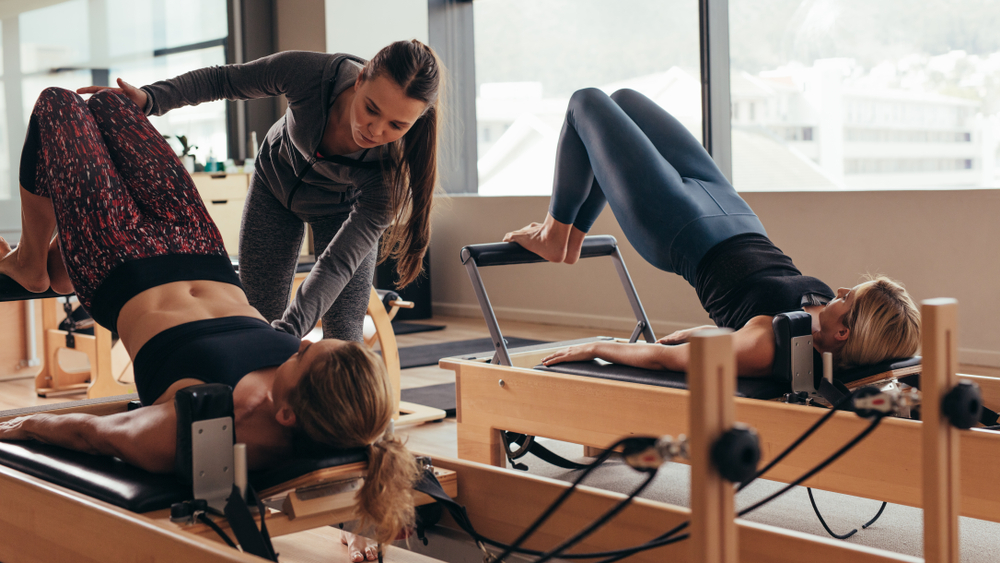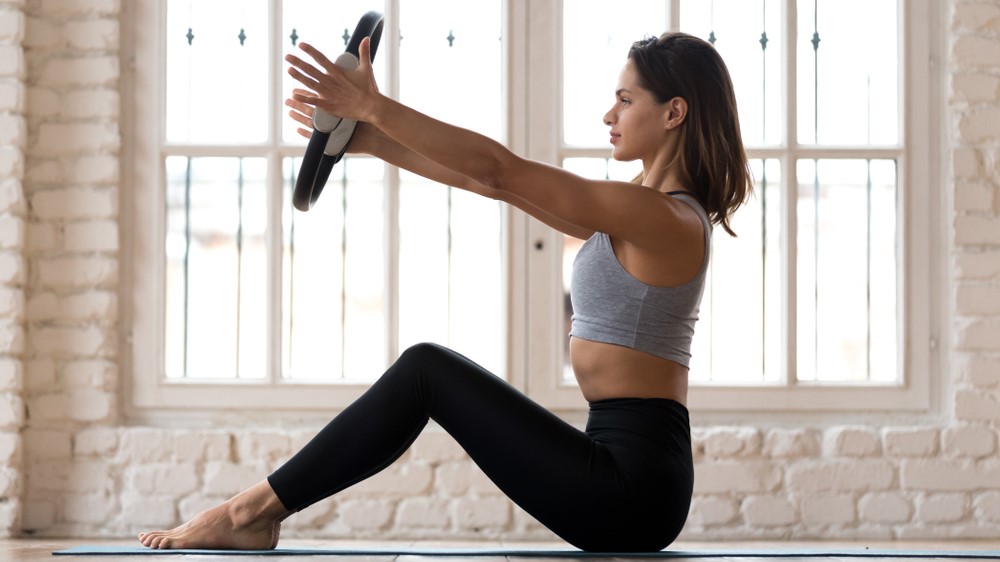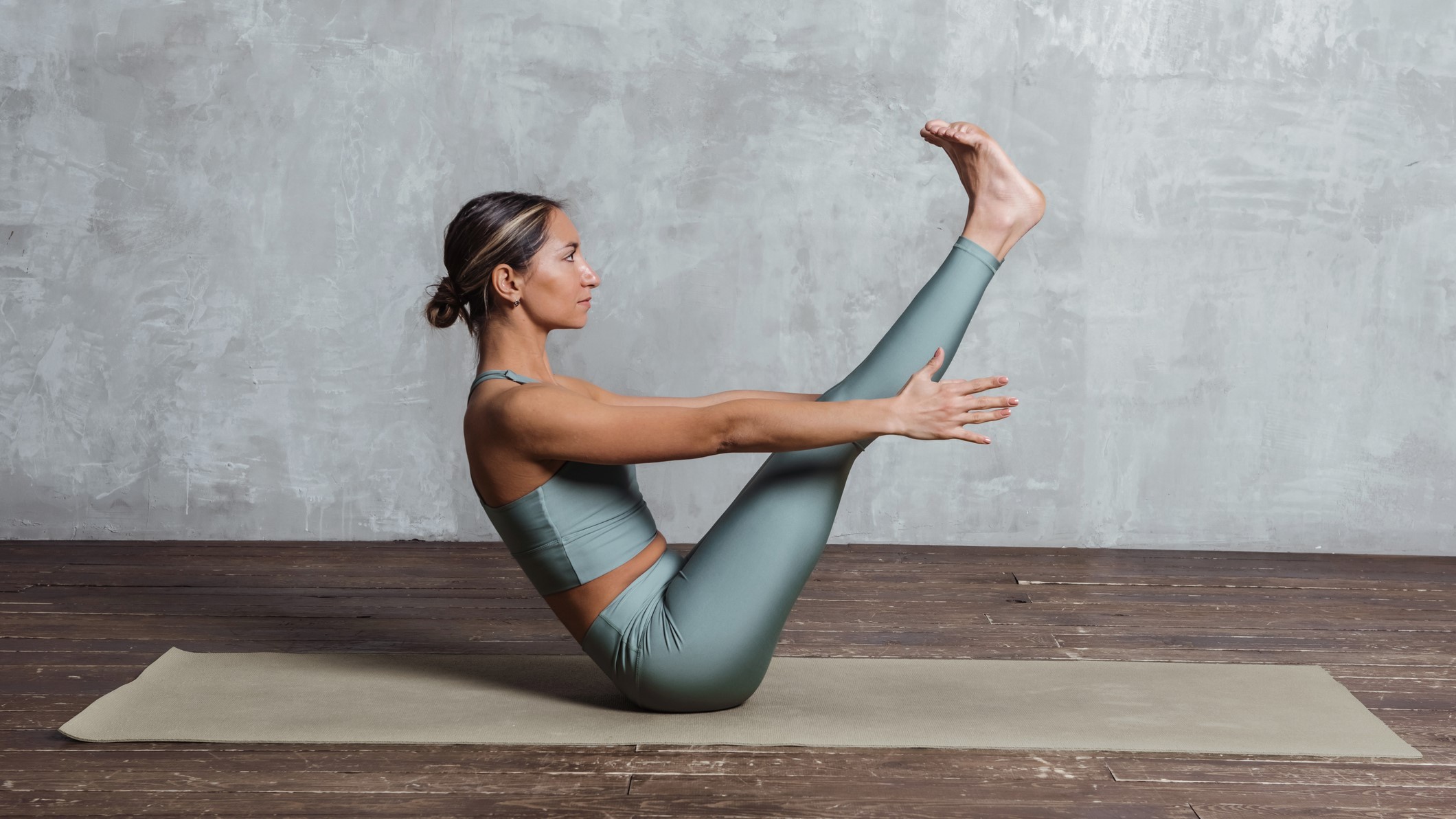Here’s what an hour of Pilates can do for your body
Thinking of taking up Pilates? Here’s why you should

If you’re thinking of taking up Pilates, you might be wondering what this low-impact exercise might do to your body. While it won’t leave you dripping in sweat, Pilates strengthens your body through small, repetitive movements. This workout style, designed to create stronger, sculpted muscles, has become a household name due to its celebrity following. But if you’re thinking of taking it up this year, we’ve rounded up some of the benefits of Pilates below.
Most Pilates classes are around 45 minutes to an hour long. And while you might not notice all of these benefits after your first class, regular practice will strengthen and tone your body, as well as improve your posture, and increase your flexibility. You might feel a little sore after your first Pilates class — DOMS (delayed onset muscle soreness) usually occurs 24 to 48 hours after exercise and is perfectly normal. Make sure you stretch and stay hydrated during this time.
Looking to practice Pilates from home? Here are 5 Pilates ab exercises that’ll strengthen your core, a Pilates abs and glute workout you can do from home, plus, everything you need to know about doing Pilates for weight loss.
What are the benefits of Pilates?
Here’s what regular Pilates classes can do for you and your body:
Pilates can improve your core strength
One of the main focuses in Pilates is strengthening the core — the center of the body, including the abdominals, lower back, and pelvic floor. If getting visible abs is your goal, however, no amount of Pilates classes alone will make a difference alone — visible abs are a product of a low body fat percentage, here’s how to calculate yours, and why it matters.
A strong core is far more than just an aesthetic goal, however. Core strength can help you run stronger, lift heavier, sit with better posture, and avoid injuries. One small study found that two-hour-long Pilates classes a week for 12 weeks improved abdominal strength and upper back posture.
Pilates can reduce back pain
Talking of your back, there’s a reason why Pilates is often recommended for those rehabbing injuries — it’s a low-impact way of strengthening muscles. As Pilates targets the abdominal muscles and the pelvic floor, a number of studies have shown that it can strengthen the back, and reduce back pain.
Sign up to get the BEST of Tom's Guide direct to your inbox.
Get instant access to breaking news, the hottest reviews, great deals and helpful tips.

Pilates can increase flexibility
While Pilates and yoga aren’t all that similar, in both you'll work on stretching the muscles and moving with a full range of motion in your joints. In a Pilates class, you’ll do precise, controlled movements that can increase your flexibility and mobility.
Pilates can improve your posture
One aspect that’s especially important if you spend a lot of time sitting behind a desk, Pilates focuses on good alignment in the body, supported by a strong core. This is why it’s great for runners, cyclists, or anyone who practices sport, as it helps you work on areas of weakness in your body and prevent injuries.
By strengthening weaker muscles and your back with regular Pilates practice, you’ll often find your posture improves.

Pilates boosts your energy and mood
Pilates is a mind-body practice that requires you to focus on your breathing. In your first class, you might be confused by your instructor, and your fellow classmates doing deep, loud breaths during class, but deep breathing is key to Pilates practice.
This deep breathing, as well as the movement, stimulates feel-good hormones, oxygen flow and blood-circulation, all of which can boost your energy and can improve your mood.
Pilates decreases stress
Again, the Pilates deep breathing has also been found to decrease stress by lowering cortisol over time. If you find faster HIIT workouts or gym sessions to be stressful, Pilates is often a much gentler environment, where you can relieve tension and focus on your breathing.
Pilates can promote weight loss
Last, but by no means least, if losing weight is your goal, Pilates can help. But don’t expect to drop pounds as fast as you would with other forms of exercise.
Celebrity trainer Paola Di Lanzo, founder of renowned Paola’s BodyBarre (PBB) explains,“One of the first questions I get from clients is ‘will I lose weight with Pilates?’” she says. "Yes, Pilates can change your body composition.” Improvements to your spine and joint health could improve your movement efficiency and contribute towards weight loss. But Di Lanzo warns that weight loss is more complicated than practicing Pilates alone.
Looking for more workout inspiration? Read what happened when our fitness editor did Pilates every day for a month, plus use this at-home Pilates workout with weights to really up the ante.

Jane McGuire is Tom's Guide's Fitness editor, which means she looks after everything fitness related - from running gear to yoga mats. An avid runner, Jane has tested and reviewed fitness products for the past five years, so knows what to look for when finding a good running watch or a pair of shorts with pockets big enough for your smartphone. When she's not pounding the pavements, you'll find Jane striding round the Surrey Hills, taking far too many photos of her puppy.
